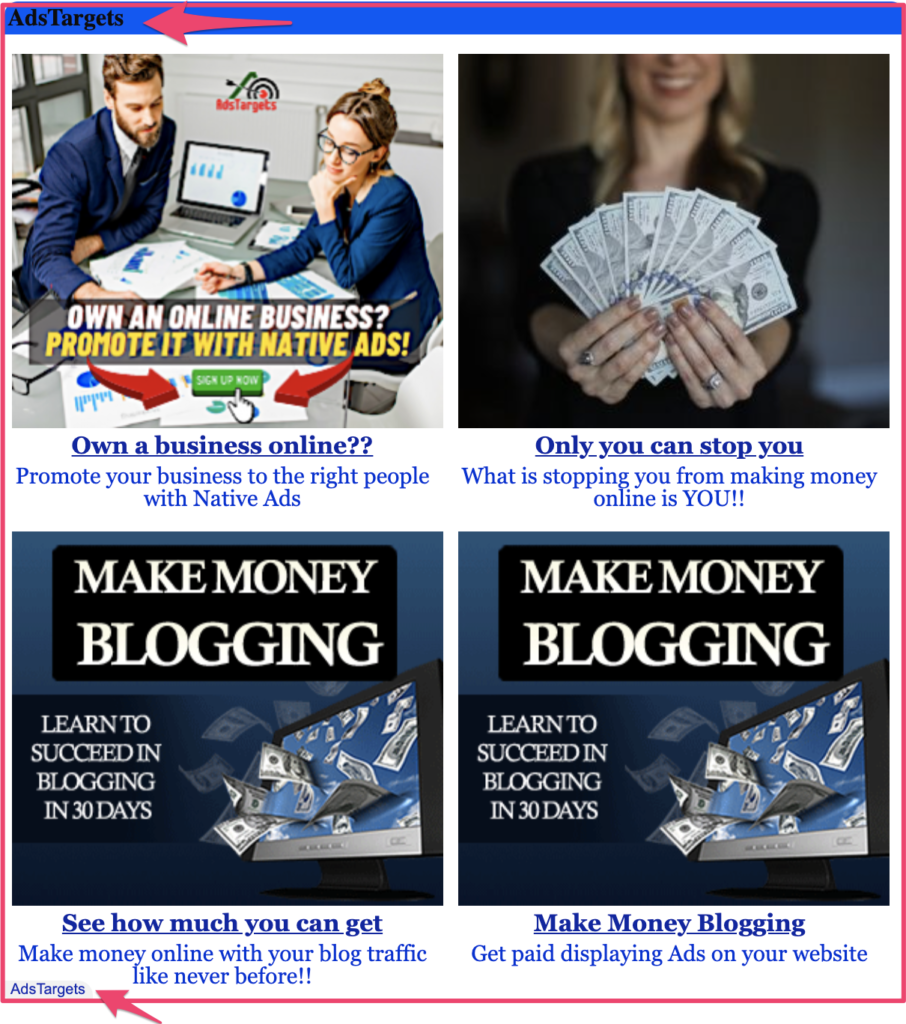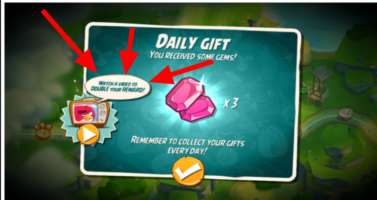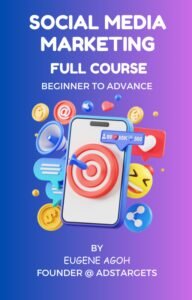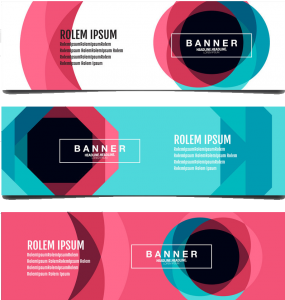Updated 05/04/2025
Native advertising has become very popular among marketers seeking to boost content marketing, promote products and services, increase sales, or buy quality website traffic from the targeted audience.
Content marketers are increasingly promoting their content through native ad networks to increase engagement, subscribers, and even sales.
It seems native ads are the present and the future of online advertising. However, many digital marketers or brands have tried out native ads or even know how to go about it.
So what is native advertising? here is the most precise definition
Table of Contents
ToggleNative Advertising Definition?
Native advertising is a type of advertising that matches the platform’s form and function upon which it appears. In many cases, it functions like an advertorial and manifests as a video, article, or editorial. The word “native” refers to the content’s coherence with the other media that appear on the platform.
These ads reduce a consumers’ ad recognition by blending the ad into the native content of the platform, using somewhat ambiguous language such as “sponsored” or “branded” content. They can be difficult to identify due to their ambiguous nature properly.
Product placement (embedded marketing) is a precursor to native advertising. The former places the product within the content, whereas in native marketing, which is legally permissible in the US to the extent that there is sufficient disclosure, the product and content are merged. (Source: Native advertising Wiki).

How Native Advertising work
Native ads, just like other forms of online advertising, are bought or placed by brands and media buyers (advertisers) on the Demand-side platforms (DSP) and shared or displayed on Supply-side Platforms (SSP).
The advertiser creates ads in the form of text and image ads that come in various sides while the DSP figure out which publisher’s websites the ads should be placed on based on the relevance of the content and the advertiser’s target audience advertiser (Brands or marketers).
Native ads are mostly displayed in the form of recommended content and below the page’s content, making it less intrusive.
Due to the images used in native advertising, people are more drawn to clicking on those ads than traditional display ad formats such as banners.
Example of Native Ads
AdsTargets as native ads DSP and SSP offer marketers the opportunity to expand their reach with native ads, as seen below. This is a sample of a 2×2 native ad from AdsTarges showing a publisher’s website.
We have various native ad verticals/sizes and specs to suit your content marketing and product advertising needs. you can find more native advertising examples here.

Is Native Advertising Effective
Native advertising is obviously a very effective way of advertising and boosting your content outreach.
There is a good reason why big brands engage in native advertising. Even though many people see native advertising as ads, they are more willing to click on them, share them and make their buying decision after viewing native ads.
Native advertising is that powerful. It fools no one but still has a huge impact on viewers buying decisions.
Well-designed native ads are seen as adding value to the content where the native has been placed; hence they match or are seen as more relevant.
We will take a look at some successful native advertising stories.
Why prefer a Native Advertising Strategy?
Because people perceive native content as more reliable and engaging than traditional advertising. And because over the next 5 years, this form of advertising is expected to grow by 156%.
A study carried out by Yahoo and Enders Analysis “Native Advertising in Europe to 2020” has analyzed the growth estimates for Native Advertising in 2020;
By the end of this year, native advertising:
– will account for 52% of all display advertising in Europe;

– the investment in native ads will amount to €8.8 million in Europe;
– will reach 6.3 billion euros to be invested in social network native advertising.
After having seen these data I think it’s time to think about how to implement a native ads strategy in your projects and to establish a budget for a campaign.
To determine how and how much to invest in native content you need to have an overview of what are the steps to follow to implement an effective strategy.
Beyond That, What Are the Clear Cut Benefits of Native Advertising?
When people head to Google, they usually have a goal—they’re searching for a product, looking for answers, or trying to solve a problem. On social media, though, it’s a different ball game. Users aren’t necessarily shopping; they’re scrolling through posts, checking out trends, engaging with their communities, and seeing what their friends are up to. That means capturing their attention with traditional ads can be hit or miss.
This is where native advertising changes the game. It doesn’t just interrupt users—it blends in. Unlike intrusive pop-ups or flashy banner ads that people instinctively ignore, native ads fit naturally into the content people are already consuming. Whether they’re reading an article, watching a video, or exploring a blog, your brand becomes part of the experience instead of an unwelcome distraction.
But what makes native advertising so powerful? Let’s break it down:
#1. Instant Credibility and Trust
Consumers are naturally skeptical of ads, but when your brand appears on a reputable news site, blog, or industry magazine, it carries instant credibility. Studies show that 68% of users trust native ads in an editorial setting compared to only 55% for traditional social media ads. When people see your brand alongside high-quality content, they’re more likely to trust it.
Imagine your brand being featured in a well-respected publication within your industry. Just by association, your authority and reputation get a massive boost. It’s like getting an endorsement without explicitly asking for one.
#2. Tapping Into an Already Engaged Audience
One of the biggest struggles for brands is building an audience from scratch. Running native advertising campaigns on established platforms solves this problem. You’re not throwing ads into the void and hoping for the best—you’re strategically placing them in front of an audience that’s already engaged and interested in similar content.
For example, if you sell fitness gear, running a native ad on a popular health and wellness blog will get you in front of an audience that already cares about working out and staying fit. You don’t need to convince them why fitness matters—you just need to show them why your brand is worth their time.
#3. Boosting Purchase Intent Like Crazy
Traditional ads often focus on direct selling, which can be a turnoff for people who aren’t in buying mode yet. Native advertising, on the other hand, nurtures interest and subtly guides users toward a purchase.
Studies show that native ads increase purchase intent by 18%. When people discover your product in a natural and engaging way—rather than being force-fed an ad—they’re much more open to considering it. They feel like they found your brand rather than being sold to, and that makes all the difference.
#4. Seamless, Engaging, and Non-Intrusive
Nobody likes feeling bombarded by ads, and that’s why native advertising is so effective—it doesn’t feel like an ad. Instead of disrupting the user experience, it enhances it. Your content flows naturally within the platform, making it easier for users to engage without feeling pressured.
Kiran Mehra, co-founder of Goldspot Pens, puts it best:
“The beauty of native advertising is that it blends right in. Unlike those annoying pop-ups, it flows naturally with the content, making it way more engaging. It’s like having a laid-back convo with your audience rather than screaming for attention.”
If you want your brand to be seen, trusted, and remembered—without annoying potential customers—native advertising is the way to go. It positions your brand exactly where your audience is already spending their time and ensures that your message reaches them in an organic, engaging way.
So instead of fighting for attention with intrusive ads, let your brand become a natural part of the conversation. That’s the real power of native advertising—it doesn’t just sell; it connects.
Forms Of Native Ads
#1. Branded Content Ads
Branded content comes in many forms, such as an article, a video, a podcast, or anything that adds value to the customer’s experience and helps create a connection with the brand.
Branded Content, in contrast with the previous examples, is targeted to evoke the audience’s emotions and guide them to the brand instead of a sales pitch.
The publishers mention the paid nature of the content when publishing native content. Let’s elaborate more on this example of a native advertisement and analyze Branded Content’s 3 basic features.
- Feature No.1
Its purpose is to create brand talk. One of the key guides for creating branded content is its ability to create a buzz around the brand rather than make a sale. - Feature No.2
Targets the Audiences’ Feelings. Instead of giving reasonable explanations for calling the audience to action, Branded Content Ads trying to make a personal connection and leverage their emotions. Most of the time it tells a story about the brand in an ingenious way. - Feature No.3
Data-driven. With branded content advertisements companies can measure the response they get from a campaign and create a campaign that will strike a chord.
#2. Content Recommendation Ads
Content recommendation advertising platforms place links beneath or next to articles or blog posts on a given website.
The format is always pretty similar to one of the websites already has not to interrupt the page design and content flow.

Native Advertising Networks
AdsTargets
We have built one of the most powerful native advertising platforms in the market. We made it easy, cheaper, flexible and profitable for brands to boost their content marketing with native ads.
Through native ads, brands have increased sales, convert a lot of potential clients, and have relatively seen an increase in their profits. Native ads are loved by publishers as well as their audiences.
Take advantage of the natives’ ad platform and start your first native campaign today by clicking the button below.
Other famous platforms for Recommended Content Ads are Taboola and Outbrain.
Taboola is collaborating with some of the biggest publishers like Bloomberg, Business Insider, CBC NEWS, and more. Outbrain collaborates with CNN, SKY News, The Guardian, and more.
Content Recommendation, in our opinion, is a good option for publishers with quality content and with a lot of quantity. The reason for that is that the recommendations may lead the viewer to leave the website.
Mobile Native Ads
If you have ever played or tried any kind of mobile game, you have probably come across Mobile Native Advertising.
This type of native advertising can take a format of the video that matches the content.

Mobile Native Advertising brings value to the user (player) by giving him extra credits/rewards after he clicks on the ad and goes through the entire video advertisement.
As an advertiser, if you want to increase brand awareness, better advertising performance, and higher engagement, mobile native advertising is one of the best ways.
Wrapping up
To wrap about what is “Native advertising“, It’s the concept of creating ads that are so cohesive with the page content, assimilated into the design, and consistent with the platform behavior that the viewer feels the ad belongs there. Promoted search results and sponsored social media posts are popular examples of native ads.” (source: Taboola)
Native advertising is sure about the present and the future of advertising. It’s here to stay and will even become more popular and hopefully not more expensive.
The time to start your native ad campaigns is now. It’s one sure way to boost your content marketing efforts, attract more customers and get your sales up.
We have already provided you with the platform to start your native ad campaign so what are you still waiting for?








